To learn more about the process, I speak to folks already walking the walk within their businesses. We discuss the tech's benefits, limitations, and practical applications below.
Table of Contents
- Why use AI for customer feedback analysis?
- How to Use AI for Customer Feedback Analysis
- AI Feedback Analysis: Is It Worth It?
Why use AI for customer feedback analysis?
It’d be all too easy for me to praise AI without a second — let alone critical — thought. (Isn’t that the cool thing to do now?) And I genuinely believe customer support is an area where the pros of AI can outweigh the cons — if you apply the technology thoughtfully within your operations.
But here’s the thing: For you to make an informed decision about how, or even whether, to apply AI to customer feedback analysis, I need to go beyond the benefits. So, for each benefit, I share a corresponding limitation. The cherry on top? Benefit or limitation: I’ve paired each with a real-world example.
Benefit: Analyzing Vast Amounts of Data at Speed
There’s no two ways about it: AI can gather, segment, and analyze an amount of data that’s simply unfathomable to our human brain. What’s more, it can do so in mere minutes — seconds, even. It all depends on the complexity of the task.
If you struggle to wrangle all the customer feedback data you receive across multiple channels, AI could help you analyze it and reap the benefits.
Real-World Example
“I recently worked with a SaaS company that was struggling to keep up with the volume of customer feedback they were receiving,” says Richard Dalder, a business development representative at Tradervue.
To address this issue, Dalder’s team implemented an AI-powered feedback analysis tool. The tool automatically collected and categorized feedback from all channels, using natural language processing (NLP) to understand the context and sentiment behind each comment. “It then generated reports that highlighted key insights, such as common pain points, feature requests, and positive experiences,” Dalder recalls.
Limitation: Fewer Face-to-Face Interactions with Customers
Yes, AI can reduce the time and resources needed for customer feedback analysis. The downside? You can develop a bias toward gathering written customer feedback. We’re talking email, social media, and customer surveys — all of which are helpful.
But in the long term, you risk having fewer face-to-face interactions with customers. Face-to-face customer interactions are a chance to build a genuine rapport, ask follow-up questions, and gain honest insights you might not have gathered otherwise.
Real-World Example:
Justin Silverman, founder and CEO at Merchynt, says their company uses AI now for every step of the customer journey.
That has given the ability to provide their customers with “a near-instant personalized strategy plan based on information we gather during their sign-up process," says Silverman.
The trade-off? According to Silverman, Merchynt has experienced fewer interactions with our customers. That means they are missing valuable opportunities to gather feedback on how we can continue to improve our offerings.
Benefit: Sentiment Analysis
In 2024, 69% of consumers “would feel positive about using a business if its written reviews describe positive experiences.” Most consumers expect to see responses to their reviews within two to three days (34%) or a week (22%). Further, 11% expect a response the same day — yikes!
Through sentiment analysis, AI can help you understand the emotional context and, thus, the level of urgency behind the customer review (aka feedback.) Here’s how.
Let’s say 100 customers have left you product reviews in the last week. AI can analyze and segment those reviews into categories based on language sentiment. It can also prioritize the reviews in order of urgency. That means you can respond to the most negative customer reviews first and de-escalate the situation before it worsens.
Pro tip: Scale customer support, drive retention, and improve response times with Service Hub.
For a bonus, the faster you respond with a customer service solution, the more likely customers are to withdraw the negative review. Even if they don’t, it shows other customers that you’re timely in your responses.
But wait, there’s more. AI sentiment analysis can also help you improve your products and services.
Real-World Example
“One key application is sentiment analysis, where we use AI to analyze the emotions expressed in customer reviews, emails, and social media mentions,” says Sam Speller, the founder and CEO of Kenko Tea.
“But rather than simply detecting whether something is positive or negative, we can deploy AI to detect more subtle emotions — anger, confusion, delight — in customer comments,” Speller notes.
For example, Speller thinks back to a few months ago. Through the AI sentiment analysis tool, Kenko Tea started seeing more reviews mentioning “inconvenient packaging” in relation to loose-leaf matcha.
Speller adds, “Nobody complained about the quality of the matcha, just the resealable pouch, which wasn’t easy to reseal. We were able to find and implement a new pouch design within a few months, after which the number of negative reviews about packaging dropped by half, and customer satisfaction scores increased by 10%.”
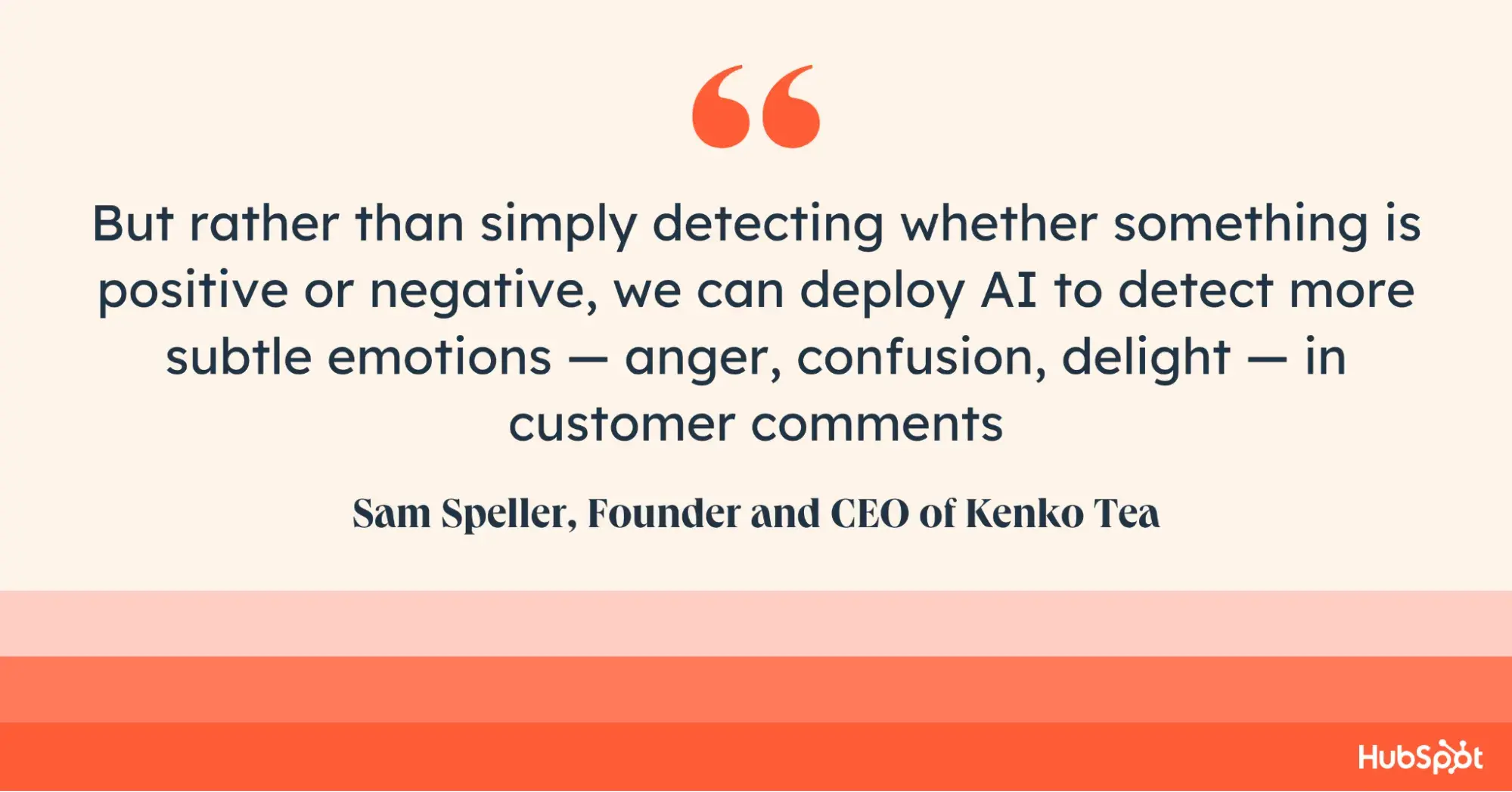
Limitation: Understanding of Nuance
Don’t get me wrong; AI is getting better at understanding the broader context and nuance behind human language. Hence, “sentiment analysis” being added as a benefit of using AI in customer feedback analysis.
That said, sometimes AI might struggle with more challenging issues like high frustration or cancellation intent. And if I’m honest, many folks brought this up as their primary limitation with AI feedback analysis.
I think this is where you need human intervention within the process. By all means, you can use AI to speed up data gathering, analysis, and segmentation. However, a human agent or team member should be involved to review and validate the insights.
Or as Sam Speller puts it: “AI isn’t yet capable of context and nuance. Our human reps are still vital for understanding the ‘why’ behind the sentiment and for adding the personal touch.”
Real-World Example
“AI's limitations include potential misinterpretation of nuanced feedback and a lack of creativity and emotional understanding,” says Sally Bannerman, director of product marketing at ICUC.Social. According to Bannerman, human analysts complement AI in this area.
“Once our human analysts review these AI reports, they interpret the insights to double-check accuracy and identify more nuanced responses. This is key to connecting the dots between raw data and actionable advice because a robot simply won't have the contextual knowledge needed to interpret certain trends properly,” Bannerman says.
Bannerman adds that this misinterpretation can lead to inaccurate sentiment analysis and skewed data.
“This is when it is important for human analysts to step in and review the data to provide context, as they're more likely to piece this information together and make sure the feedback is correctly understood,” Bannerman says.
How to Use AI for Customer Feedback Analysis
Here are eight ways folks use AI to fuel their customer feedback analysis processes.
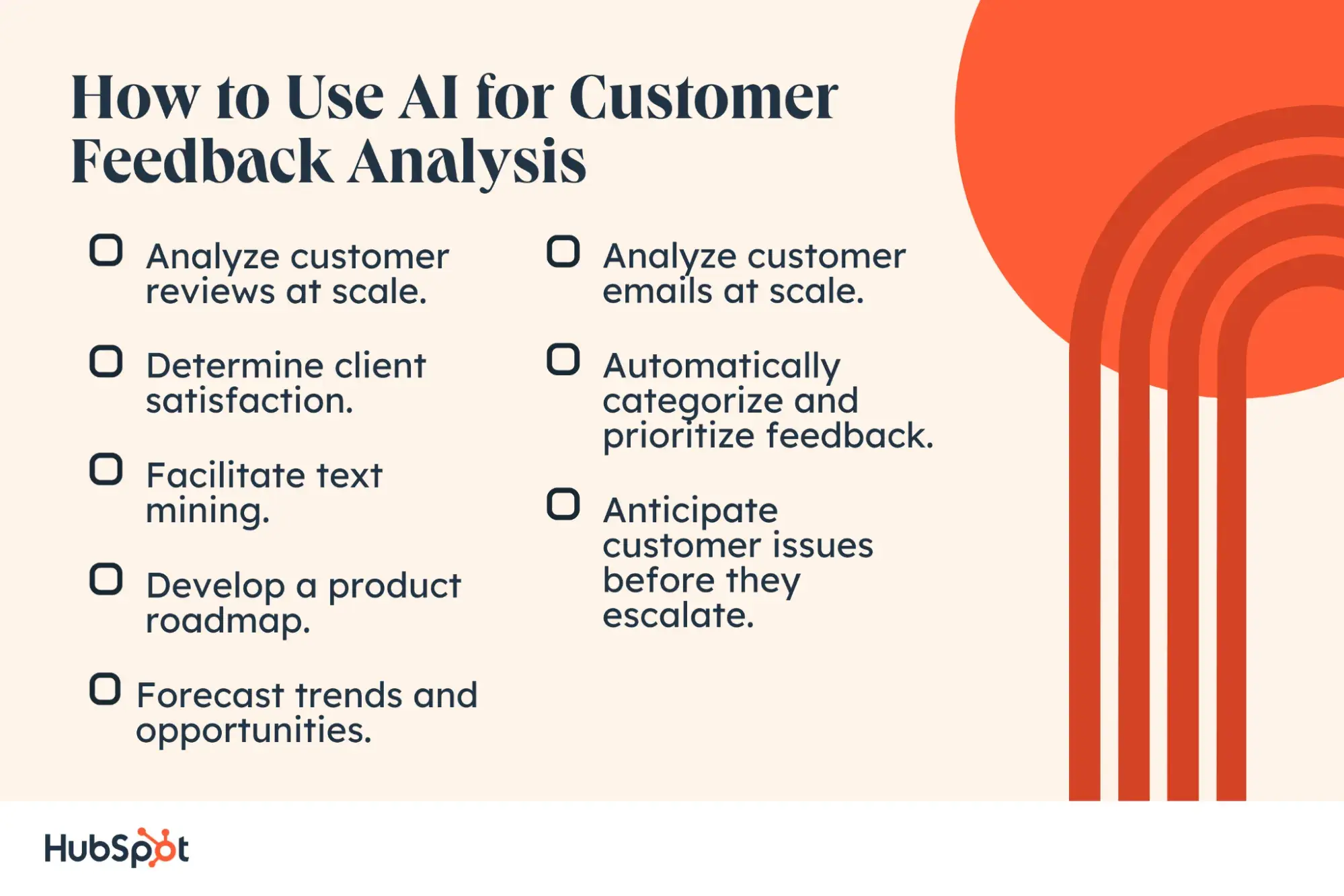
1. Analyze customer reviews at scale.
Matthew Franzyshen, business development manager at Ascendant, has been a driving force behind the implementation of AI solutions into business processes.
“One major benefit I've experienced is the ability to process vast amounts of feedback data in record time,” says Franzyshen. “We once analyzed over 10,000 customer reviews in just a few hours, a task that would have taken our team weeks to complete manually.”
Although AI excels at quantitative analysis, like Speller and Bannerman, Franzyshen also warns us about nuance: “I've found that it sometimes struggles with nuanced language or sarcasm, potentially misinterpreting the true sentiment of feedback. To mitigate this, we always have human oversight to validate AI insights.”
2. Determine client satisfaction.
Next up, VP of Analytics Services Ben Vaughan, shares two ways Brewster Consulting Group uses AI.
“Within Brewster Consulting's clients, we leverage an AI Notetaker (fireflies.ai) to record our meetings and transcribe them. Fireflies.AI has a Chat-GPT-like tool embedded into their platform that allows you to query based on the transcript of a conversation.”
Vaughan adds: “So we'll ask it things like ‘Based on the conversation, do you believe that Client X feels they are getting a good value for their money?’ or ‘Does Client X exhibit any indications that they may end our relationship in the near future?’ These insights provide a bias-free opinion on client satisfaction.”
3. Facilitate text mining.
“When we do analytics work for our clients, the primary area that we leverage AI in is text mining,” continues Vaughan. “When a customer has a large number of, say, survey responses, we leverage AI to create sentiment analysis and find common words/phrases in the text responses to better tailor the customer's product.”
Vaughan notes that AI analyzes the responses much faster than a human could and can provide customers with tangible feedback they can use.
“A couple of example phrases we‘ve pulled out are: ‘This event needed more activities’ or ‘The product doesn’t taste like [its competitor],’” says Vaughan.
4. Develop a product roadmap.
Lucas Carval, growth specialist at Mention, shares their use case for AI in customer feedback analysis.
“We recently used AI at Mention to analyze all our reviews from G2 and Capterra, our NPS scores, and feedback from churned customers to better position ourselves in the social listening market,” says Carval.
Carval AI helped the team condense hundreds of reviews into a 10-minute report, which highlighted what customers liked about the software and areas for improvement. Carval categorized the customer feedback into three groups (positive/neutral/negative) using sentiment analysis.
Carval continues, “Based on this information, we've developed a product roadmap to address the main issues customers were encountering (mainly to improve the ease of use of our software). This analysis will guide our development for Q3 and Q4.”
5. Forecast trends and opportunities.
Founder and CEO of Kenko Tea Sam Speller, shares more about their experience with AI-driven customer feedback analysis.
“AI can also help us forecast trends and opportunities by analyzing the key topics and keywords that appear most often in customer feedback,” says Speller.
For example, Speller recalls, the company learned from reviews that customers were increasingly looking for recipe inspiration.
“This led us to develop a thorough recipe section on our website as well as our email campaigns with ever-expanding collections of healthy and delicious ideas for incorporating matcha into meals, snacks, and drinks,” Speller says.
The result? “We are able to anticipate and meet many of our customers’ needs, increasing brand loyalty and encouraging repeat business.”
6. Analyze customer emails at scale.
“We use AI to process and understand thousands of customer emails every day,” says Chad Gouws, founder at FDB Analytics. In doing so, FDB Analytics hopes to achieve three things:
1. Understanding how the customer feels about their current problem and the insurance company's way of handling it so far. If the email is flagged as negative, it is prioritized so that the customer success team can solve the problem, Gouws notes.
2. Identifying trends in the issues that customers face. “We want to find patterns or parts of the business that are having issues so we can solve these issues at their root cause, improving the overall customer experience,” Gouws says.
3. Identifying which competitors customers are mentioning and dealing with to gain an understanding of the insurance landscape.
Gouws warns that data is the main limiter to this approach: “If customers are not communicating through consistent channels or the data is not available in an accessible manner, this method struggles to produce results.”
7. Automatically categorize and prioritize feedback.
“In my experience, one powerful use case for AI in customer feedback analysis is automatically categorizing and prioritizing feedback,” says Jon Gordon, managing partner and co-founder at Sheer Velocity.
At a previous company, Gordon says, there were thousands of customer support tickets and product reviews pouring in daily. Manually sorting through all that unstructured text data was incredibly time-consuming and error-prone.
According to Gordon, they implemented natural language processing models to “automatically tag feedback as relating to specific product areas, surface high-impact issues based on sentiment analysis.” They could then route items to the appropriate teams.
Gordon adds: “This AI-driven workflow allowed us to be incredibly responsive to customer needs, quickly addressing pain points and requests for new features. The AI streamlined what would otherwise have been an unmanageable deluge of data into clear, actionable insights.”
8. Anticipate customer issues before they escalate.
Alari Aho, CEO and founder of Toggl, cites their use of AI in customer feedback analysis as pivotal in enhancing Toggl’s suite of productivity tools. But how are Aho and the team using AI to achieve that?
“We employed AI-driven predictive analytics to anticipate customer issues before they escalate,” says Aho. “By analyzing historical feedback data, AI models can predict which features or aspects of our tools are likely to cause user frustration or delight.”
According to Aho, this proactive approach helps refine Toggl’s product development strategy and customize its customer service responses.
“We specifically use AI here because it allows us to anticipate and mitigate potential problems, ultimately leading to a proactive rather than reactive customer service approach, thereby increasing customer loyalty and satisfaction.”
Despite the success, Aho warns that the initial setup and training of AI systems require “substantial time and data to function effectively.” That said, “the long-term gains in customer engagement and operational efficiency are well worth the investment.”
AI Feedback Analysis: Is It Worth It?
Short answer: Yes. However, it really depends on your situation and setup.
If you have a TON of customer feedback from reviews, emails, and survey responses and struggle to wrangle the data manually, then yes, an AI-driven feedback analysis is worth it.
If you’re a freelancer with a client roster of five? The juice from AI feedback analysis probably won’t be worth the squeeze. You’d be wiser to spend that time on delivering great work for your clients.
That said, even if it makes sense to use AI to speed up and improve customer feedback analysis, it isn’t a “perfect” solution. That’s not to say you shouldn’t benefit from AI’s strengths (volume, speed, segmentation). But remember to pair this with human input and intuition.
When left to its own devices, AI often struggles with nuance. For example, it might completely overlook the sarcastic tone of a review and misinterpret it as the hallmark of a positive customer experience. (Awkward!)
Nuance aside, AI still can’t deliver that personal touch quite like a human can. So, remember to gather face-to-face customer feedback and use your intuition to analyze it occasionally.
.png?width=112&height=112&name=Image%20Hackathon%20%E2%80%93%20Vertical%20(67).png)

.png)
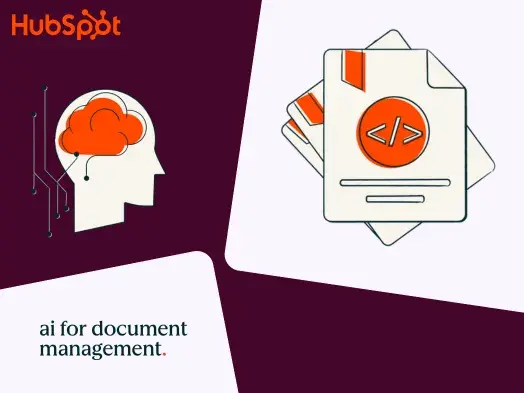
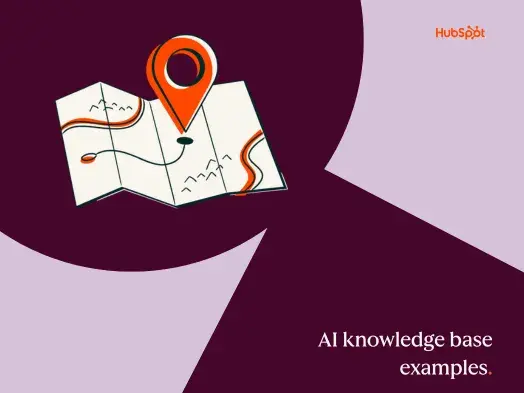
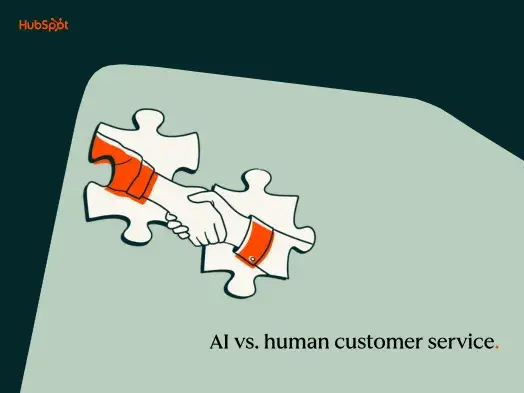


![How AI Can Unlock Customer Insights [+Expert Tips]](https://53.fs1.hubspotusercontent-na1.net/hubfs/53/customer-insights-ai-1-20241101-2082956.webp)



